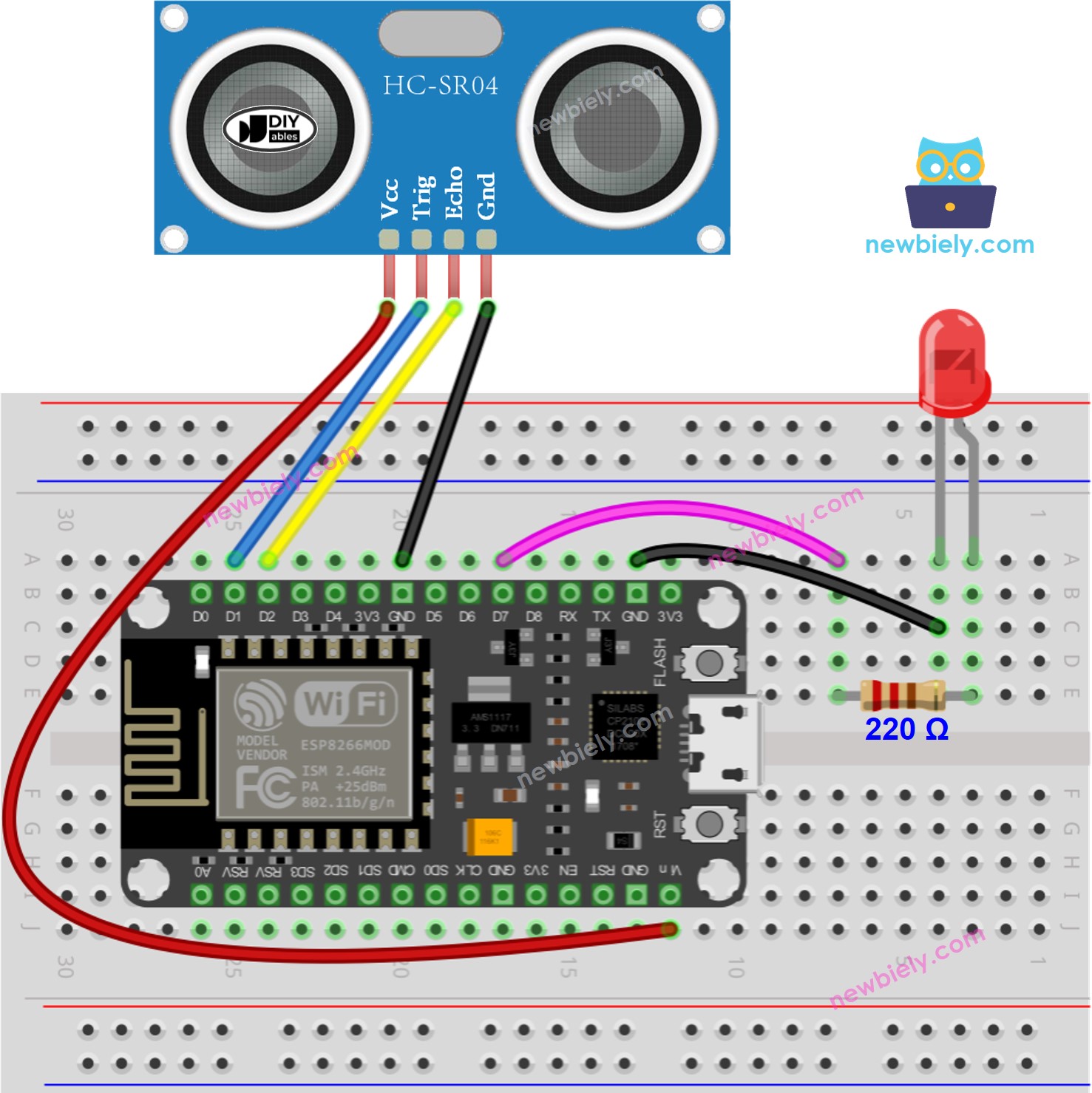ESP8266 - Ultrasonic Sensor - LED
This tutorial instructs you how to use ESP8266 and ultrasonic sensor to control LED. In detail:
- ESP8266 turns on the LED when the object is near the ultrasonic sensor.
- ESP8266 turns off the LED when the object is far from the ultrasonic sensor.
Hardware Preparation
Or you can buy the following kits:
| 1 | × | DIYables Sensor Kit (30 sensors/displays) | |
| 1 | × | DIYables Sensor Kit (18 sensors/displays) |
Additionally, some of these links are for products from our own brand, DIYables .
Buy Note: Use the LED Module for easier wiring. It includes an integrated resistor.
Overview of LED and Ultrasonic Sensor
If you are unfamiliar with LED and ultrasonic sensor (including pinout, functioning, programming, etc.), the following tutorials can help:
Wiring Diagram

This image is created using Fritzing. Click to enlarge image
See more in ESP8266's pinout and how to supply power to the ESP8266 and other components.
ESP8266 Code
Detailed Instructions
To get started with ESP8266 on Arduino IDE, follow these steps:
- Check out the how to setup environment for ESP8266 on Arduino IDE tutorial if this is your first time using ESP8266.
- Wire the components as shown in the diagram.
- Connect the ESP8266 board to your computer using a USB cable.
- Open Arduino IDE on your computer.
- Choose the correct ESP8266 board, such as (e.g. NodeMCU 1.0 (ESP-12E Module)), and its respective COM port.
- Connect your ESP8266 to your computer using a USB cable.
- Launch the Arduino IDE, select the appropriate board and port.
- Copy the code above and open it in the Arduino IDE.
- Click the Upload button in the Arduino IDE to send the code to the ESP8266.

- Move your hand in the vicinity of the sensor and
- Observe the alteration in the state of the LED.
Code Explanation
Check out the line-by-line explanation contained in the comments of the source code!
※ NOTE THAT:
The code above is for educational purposes. The ultrasonic sensor is very susceptible to interference. If you intend to use it in practice, you should filter out noise for the ultrasonic sensor. For more information on how to do this, please refer to how to filter noise for ultrasonic sensor.
